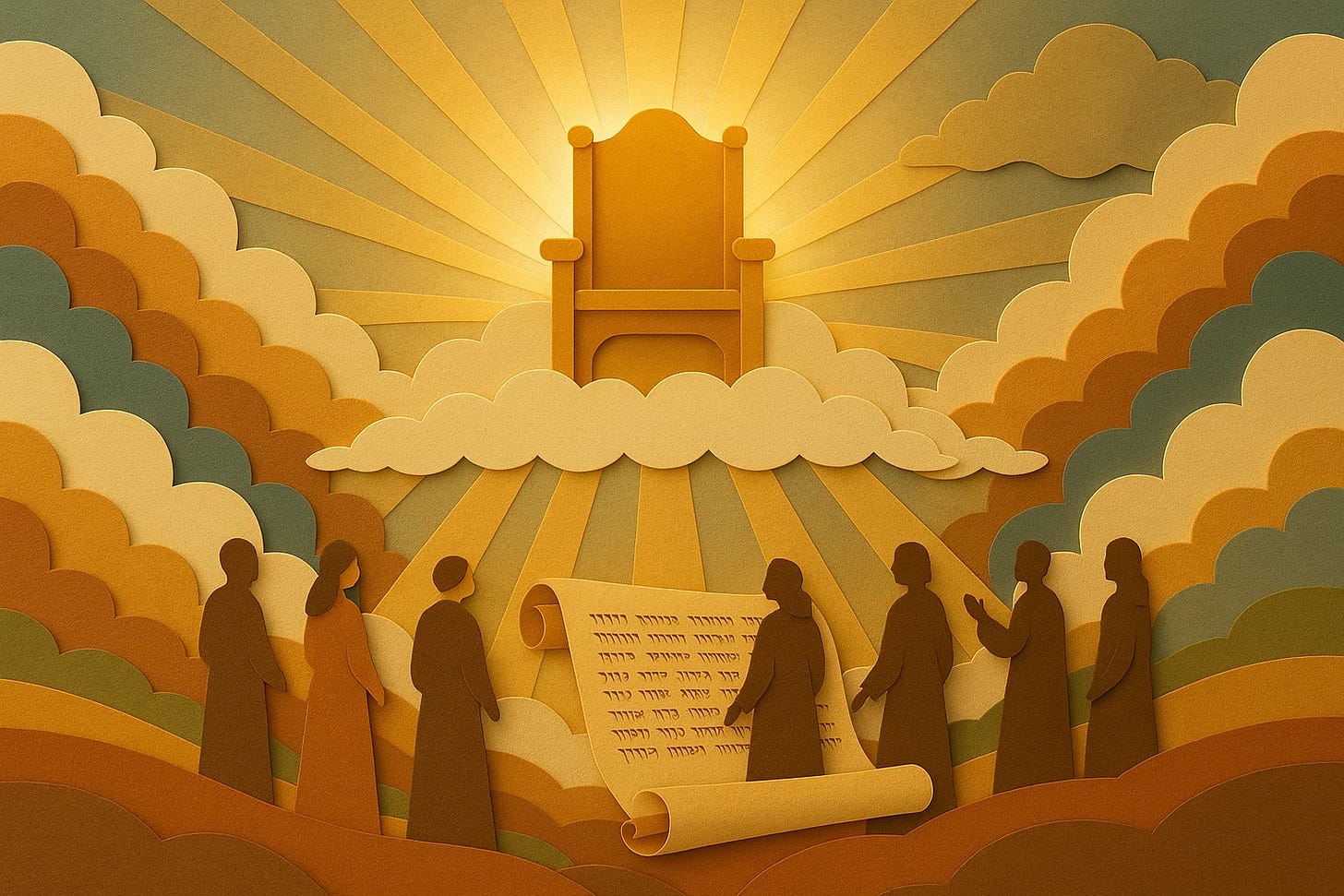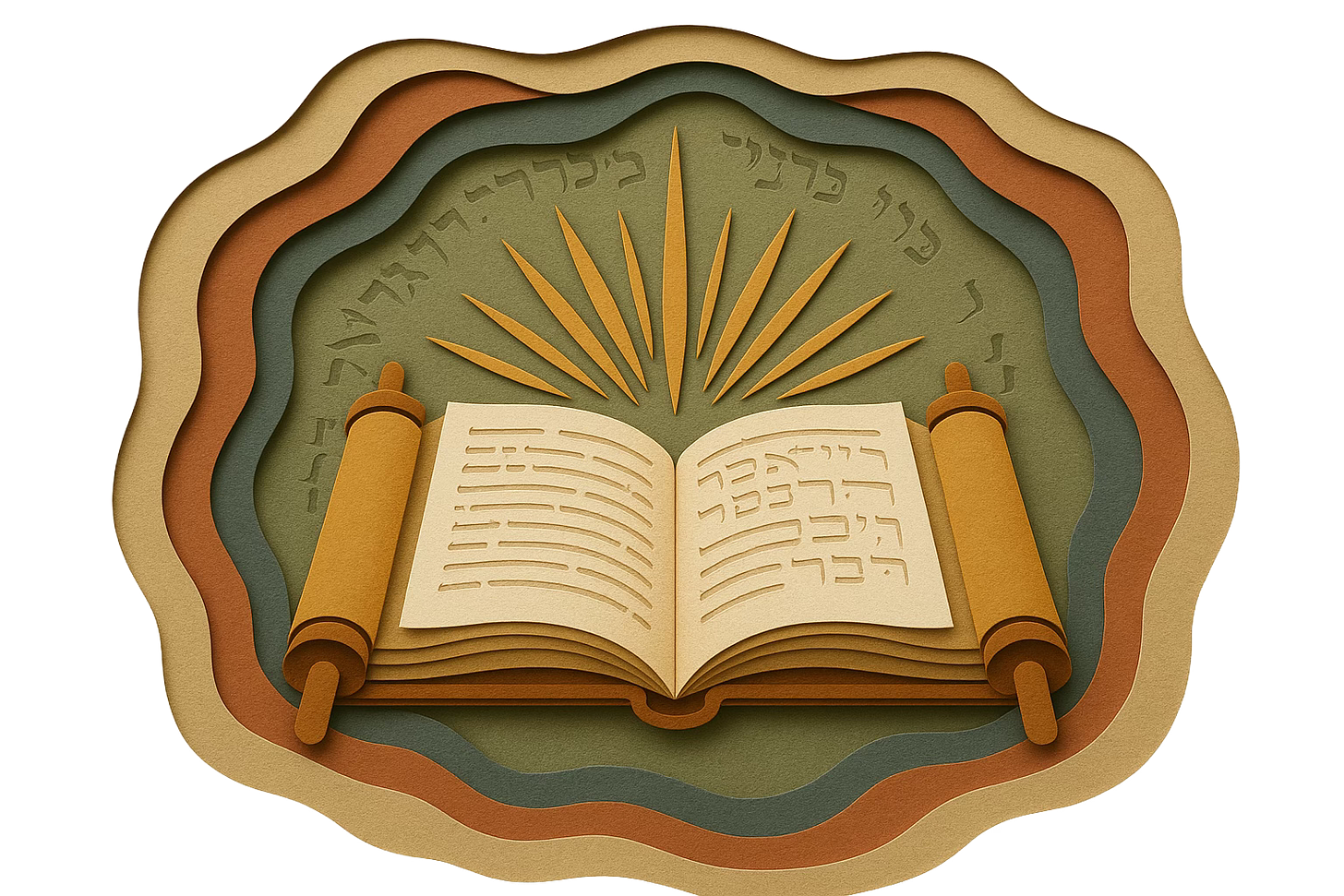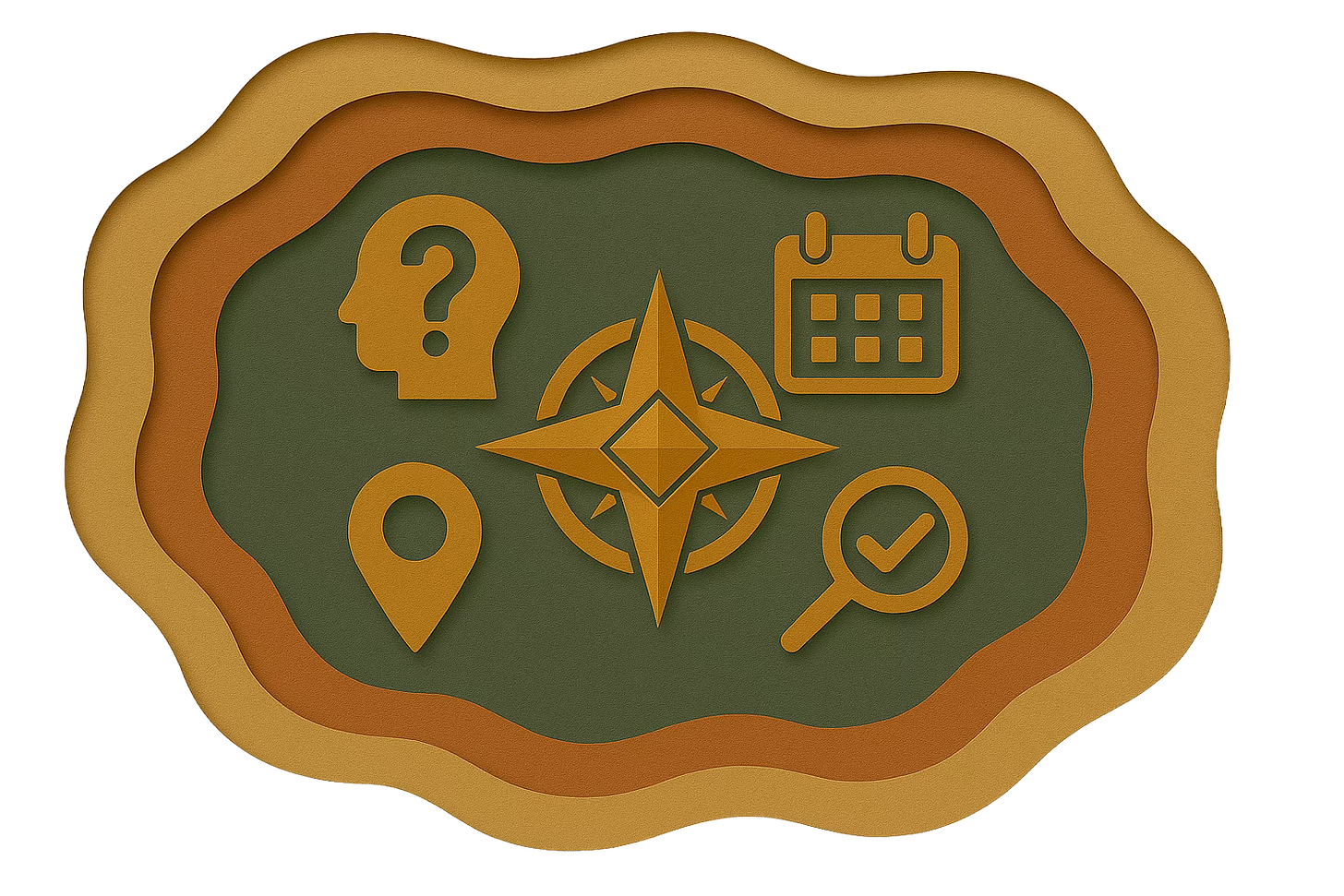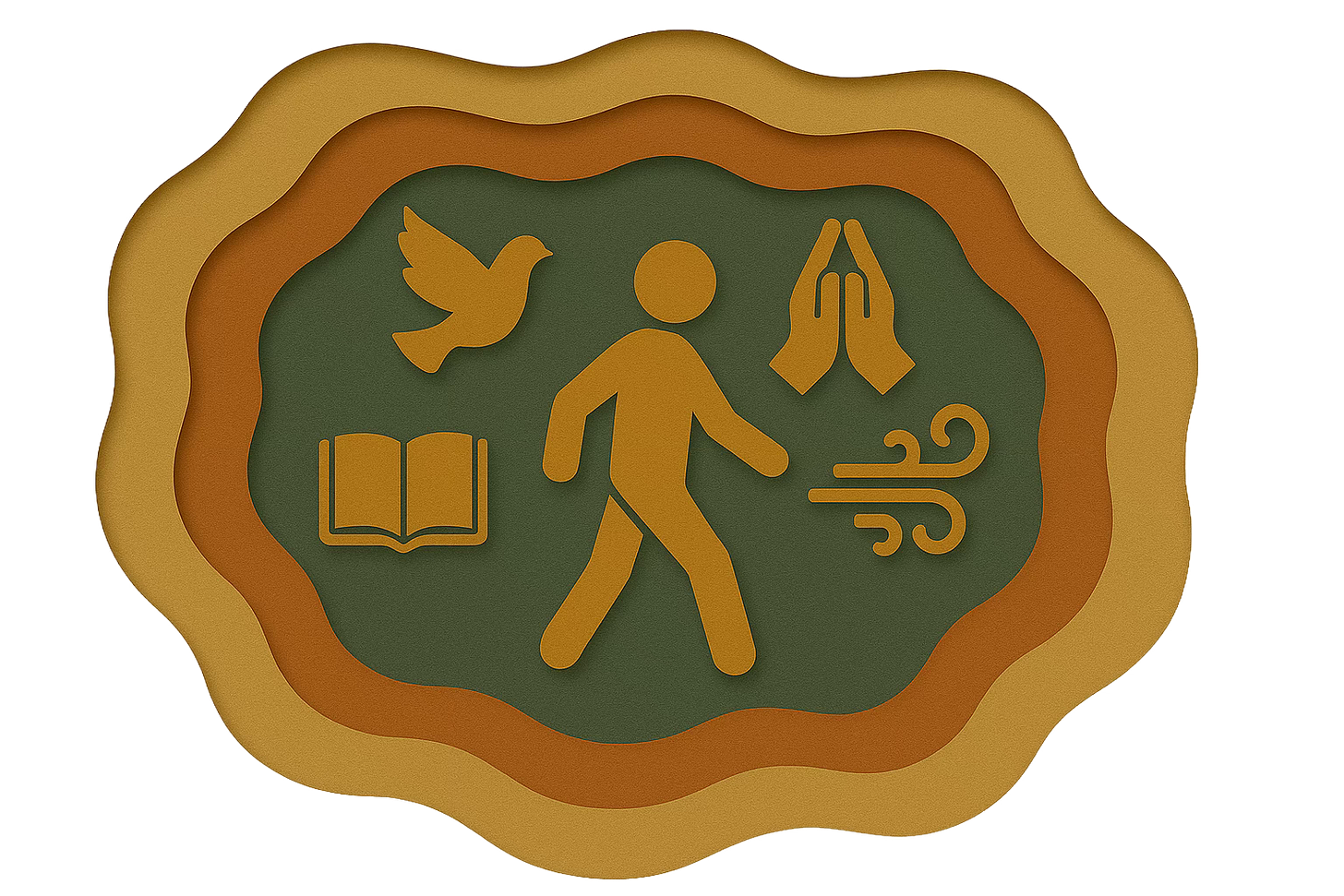The Son of Man: Heaven’s Human King and Earth’s Final Judge
Unveiling the prophetic vision in Daniel and the Messianic identity Yeshua claimed for Himself — as both Judge and Redeemer
The Son of Man: Heaven’s Human King and Earth’s Final Judge
Unveiling the prophetic vision in Daniel and the Messianic identity Yeshua claimed for Himself — as both Judge and Redeemer
Scripture: The Living Word
Featured Passage: Daniel 7:13–14
Key Verses:
Psalm 8:4–6 •
Ezekiel 2:1–3:17 •
Matthew 24:30–31 •
Matthew 25:31–46 •
Matthew 26:64 •
Mark 2:10 •
John 5:27
Daniel, a prophet in exile, received a night vision unlike anything seen before: not another beastly empire, but a radiant human — one “like a son of man” — ascending to the throne of heaven. This figure is crowned with glory, dominion, and eternal authority.
Centuries later, Yeshua of Nazareth would stand trial before religious leaders and quote that very passage, boldly claiming that He was the one Daniel saw. The Son of Man had come. Not to dominate, but to redeem. Not to avoid judgment, but to bear it. He redefined kingship—and humanity itself—through faithfulness and mercy.
Context: Behind the Words
Word Study: What Does “Son of Man” Really Mean?
🔎 Note: Yeshua almost certainly spoke Aramaic, not Greek. His use of “Son of Man” (bar enash) is a deliberate reference to Daniel 7:13, linking Himself to the divine-human King who will judge the world.
Historical & Prophetic Context
Before the Vision: Exile and Humiliation
Daniel was among the first taken to Babylon after Jerusalem’s fall (605 BCE). The kingdom had crumbled due to covenant unfaithfulness, idolatry, and injustice. The Temple was in ruins. Yahweh seemed defeated.
During the Vision: Beasts and Thrones
In Babylon’s final days, Daniel saw four monstrous empires rise like beasts from the sea. These kingdoms reflected the violent pride of humanity divorced from Yah’s design. But then the scene shifts:
“Behold, with the clouds of heaven there came one like a son of man…” (Daniel 7:13)
This human figure approaches the Ancient of Days and is given dominion, glory, and a kingdom that will never pass away.
After the Vision: Hope Deferred
Even after Babylon fell and some exiles returned, no messianic kingdom emerged. For centuries, Israel endured foreign occupation — Greece, the Seleucids, and then Rome. Daniel’s vision became the centerpiece of Jewish apocalyptic hope: Yah would raise up a divine human King to replace the beastly systems of the world.
Yeshua stepped into this very expectation, saying: “The Son of Man has come…”
Covenant: The Relational Core
Covenant Insight
Daniel 7 is not just about politics — it’s about restored image-bearing. The Son of Man fulfills the human calling from Genesis 1:26–28 to rule with Yah’s character. The beasts symbolize humanity without covenant. The Son of Man reveals what it means to be truly human in relationship with Yah.
Yeshua’s Fulfillment
Yeshua uses “Son of Man” in three main ways:
Authority on Earth: “The Son of Man has authority to forgive sins.” (Mark 2:10)
Divine Judgment: “The Father has given Him authority to execute judgment.” (John 5:27)
Heavenly Reign: “You will see the Son of Man seated at the right hand of Power and coming on the clouds.” (Matthew 26:64)
This last declaration, at His trial, seals His fate. The Sanhedrin understood: He was claiming Daniel’s throne. Not just prophet. Not just Messiah. But the human King enthroned with Yah.
Practice: Living It Out
Practical Example
The world still follows the way of the beasts—power, pride, self-preservation. But Daniel saw another way. And Yeshua walked it.
He didn’t claim the throne by force but by faithfulness.
He didn’t dominate—He forgave.
He didn’t devour—He restored.
We are called to follow His path—not just admire His title.
Three Takeaways
Reject Beastly Power: Empires rule by force. The Son of Man rules by truth, love, and righteousness.
Honor Image-Bearing: Every human life bears the glory of Yah. To follow the Son of Man is to restore dignity wherever it's been lost.
Align Your Allegiance: The throne is already occupied. Live like your loyalty is to the King who reigns through mercy, not might.
Discussion Questions
Why do you think “Son of Man” was Yeshua’s preferred self-description?
How does Daniel’s vision challenge the world’s view of power and leadership?
What does it mean to reflect the image of Yah in our dominion and relationships?
How does Yeshua hold together the humility of Ezekiel and the glory of Daniel?
Where are we tempted to live like beasts—and how do we return to covenant humanity?
Seven-Day Practice Rhythm
Walking with the Son of Man
A daily rhythm of surrender, restoration, reflection, and allegiance.
Day 1
🪞 For Yourself: Identify an area where you're clinging to control. In prayer, release it: “This belongs to You, Son of Man.”
Day 2
🤝 For Others: Affirm someone who is often overlooked — not with pity, but honor. Acknowledge their image-bearing worth.
Day 3
🙏 With Yah: Read Daniel 7:9–14 aloud. Visualize the throne room. Let it reshape your view of justice and history.
Day 4
🪞 For Yourself: Journal: What cultural or political voices are shaping my values? How aligned are they with the Kingdom of the Son of Man?
Day 5
🤝 For Others: Serve anonymously today — no credit, no recognition. Just love reflecting heaven’s King.
Day 6
🙏 With Yah: Read Matthew 25:31–46 slowly. Ask the Spirit to show you who among “the least of these” He’s calling you to serve.
Day 7
🪞🤝🙏 Sabbath Reflection: Review your week. Where did you notice Yah’s justice at work? Where did you live out your heavenly citizenship?
Final Charge
Daniel saw the beasts. But he also saw the throne.
The Son of Man has received all dominion—and He has walked our road, carried our burdens, and calls us to His way.
So we ask:
Will we bear His image—or return to the beast?
Will we serve the empires—or the everlasting Kingdom?
Will we follow the Son of Man until the clouds part again?
The clouds are coming.
And with them, the Son of Man.






